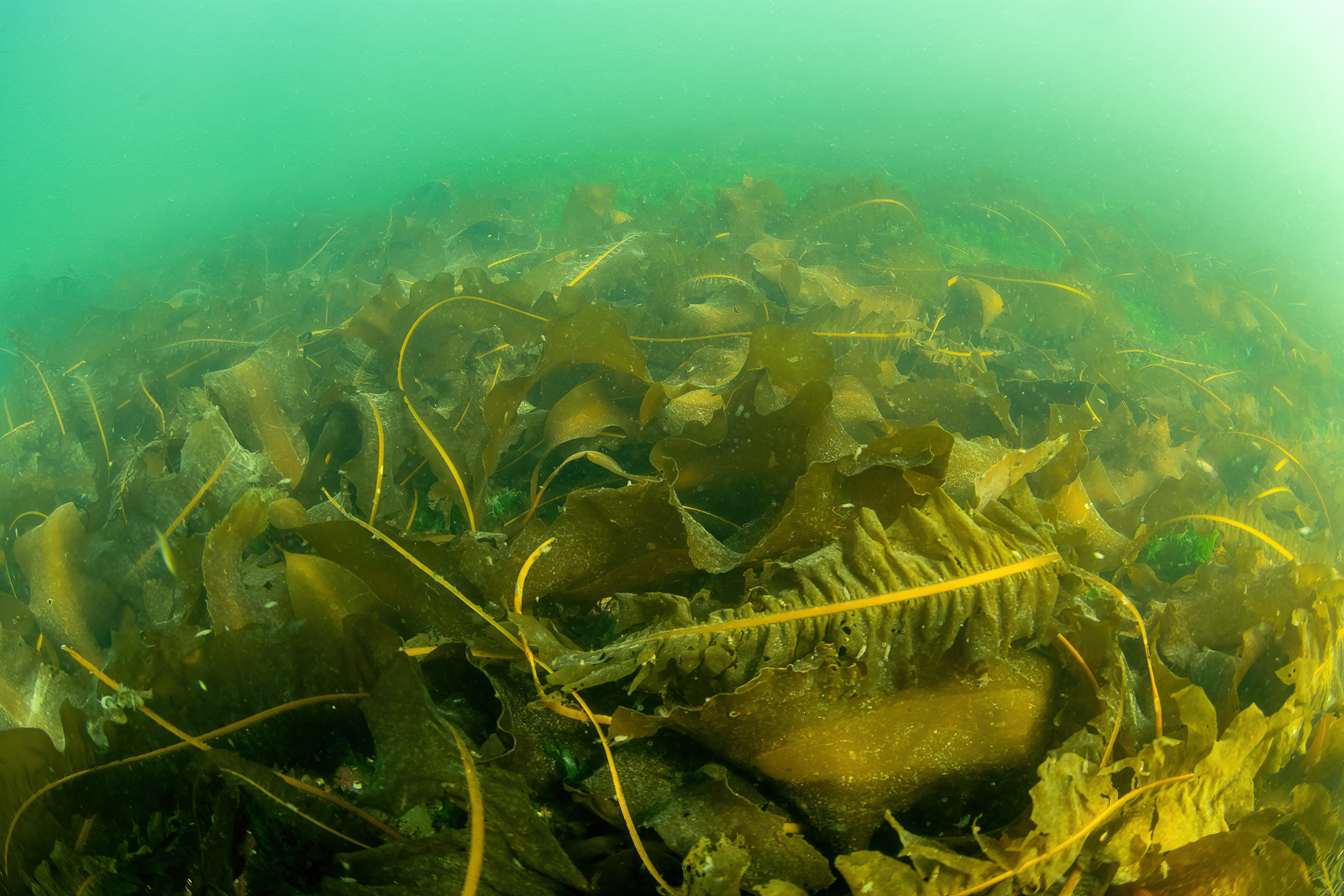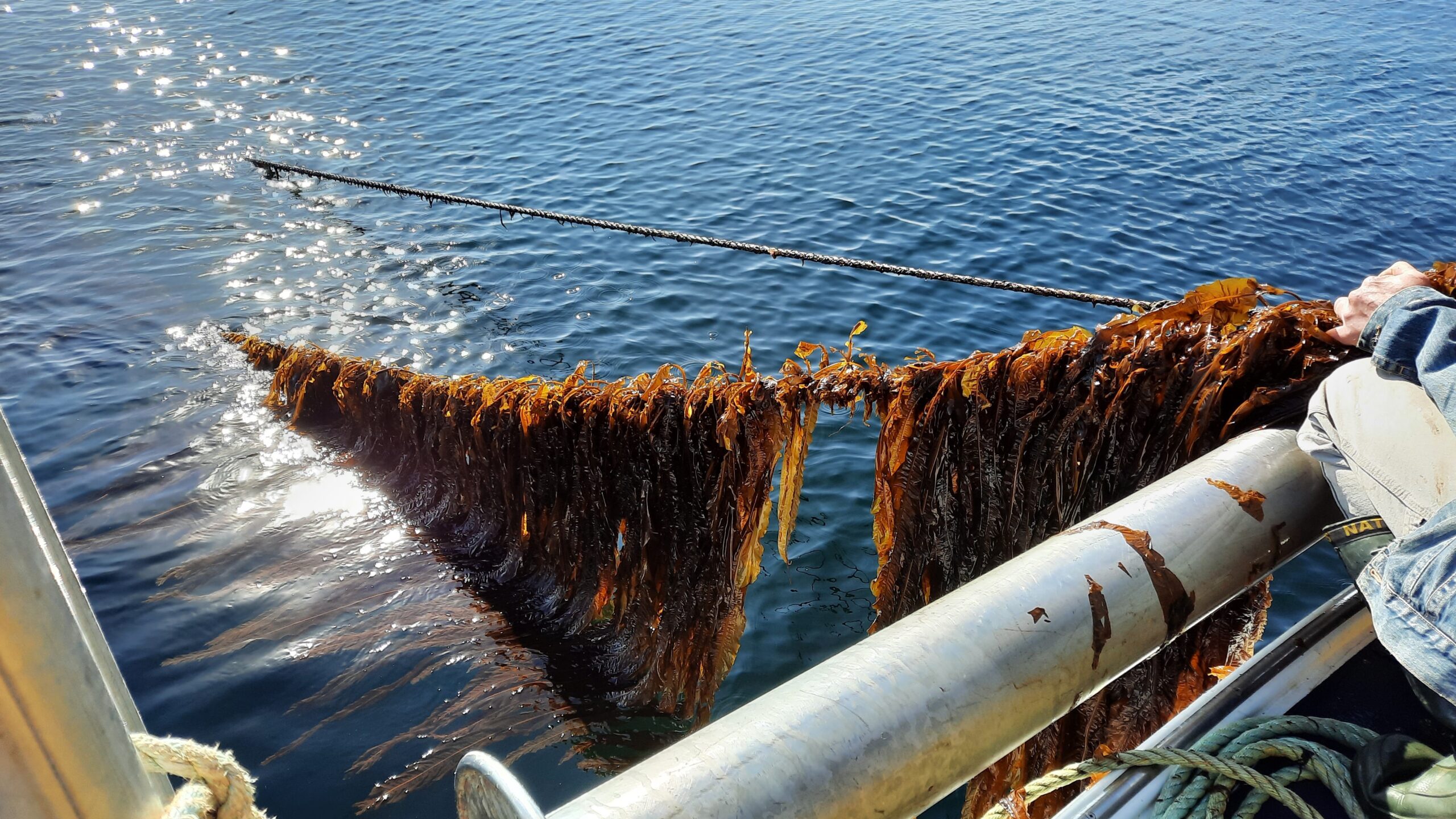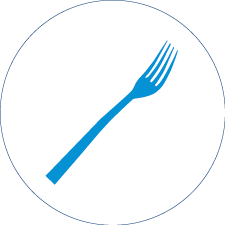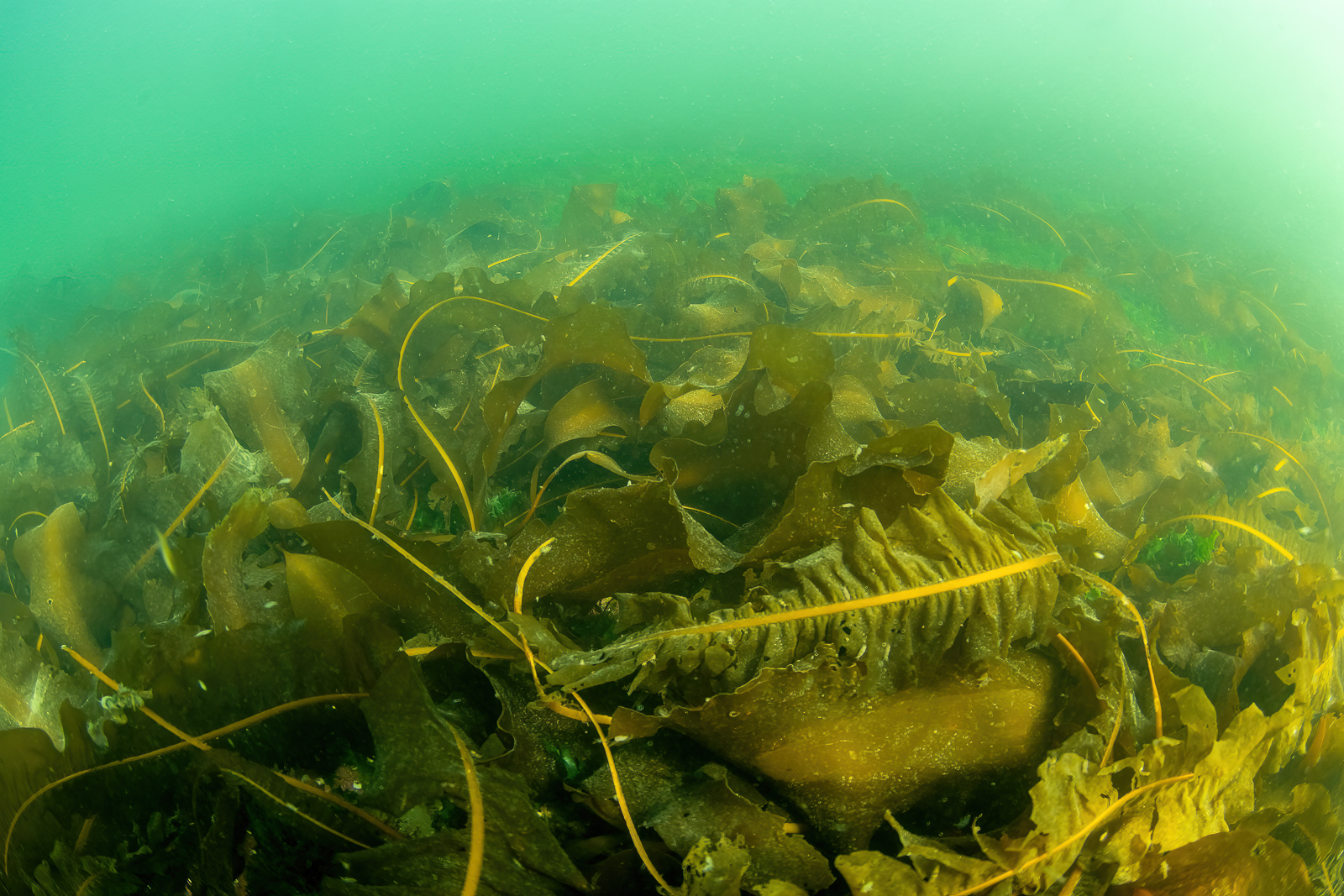
SIZE:
2.5 to 5 m long.
LIFE EXPECTANCY:
4 to 7 years.
LIFE CYCLE:
Sexual maturity is reached in the first year of life.
Winged kelp is a fast-growing seaweed. It can grow up to 20 cm per month.
In spring, its fertile blades, called sporophylls, develop on the stipe below the frond.
Reproduction takes place from April to autumn along the North Shore. In the Gaspé Peninsula, warmer water degrades the fronds, stopping reproduction in June. The sporophylls expel spores that attach to the seabed. This next generation develops close to their mother plants.

Winged kelp settles in groups. A very long alga, it often lies on the substrate.
Credit: Richard Larocque, taken in Pointe-au-Père.
Winged kelp is a large, dark green or brown seaweed. It consists of a long, single frond divided by a thick midrib. Its frond is very thin and fragile and can reach 50 cm in width. It has a smooth edge.
Its short stipe ends in a holdfast used to cling to the substrate.
Its fertile parts are found on small, flattened blades attached symmetrically on both sides of the stipe, beneath the frond.
Coastal zone, below the low tide line.
The winged kelp prefers dynamic environments exposed to waves, such as rocky headlands or capes. It is often the first seaweed species to settle on bare substrates.
It favours cold water and will die in water above 16 °C.
Inseparable
Winged kelp will cling to rocks so tightly that sometimes the rock will break, rather than this macroalga.
PREYS:
CO2
Solar energy
PREDATORS:
Urchins
Herbivorous molluscs
Grazing fish
MACHINES:
Hand harvesting.
REGULATIONS:
The same area can only be harvested once a year. Only every second frond is harvested in order to preserve the resource. Cutting the frond 30 to 40 cm above the junction with the stipe will allow wakame to regenerate.

Winged kelp is one of the seaweeds cultivated in the Gaspé region by the Mi’gmaq Wolastoqey Indigenous Fisheries Management Association (MWIFMA).
Credit: Exploramer, photo taken in 2021.
Winged kelp is a Smarter seafood-listed species.
BENEFITS:
The winged kelp is rich in iodine, calcium, iron and magnesium, as well as vitamins A and B. It is also a good source of fibre and protein.
LET’S COOK:
Its mild marine taste makes it perfect for enhancing the taste of smoothies, cocktails and desserts.
Mild vegetal flavour with a hint of hazelnut. It goes well with fish, seafood and soups.
The whole plant is edible. However, the texture varies between its crunchy, firm midrib and its rather tender leaf.
Its fine frond makes it a particularly popular sea vegetable.
OUR CULINARY ADVICE:
The waters of the St. Lawrence are known for their good quality. However, as algae absorb the elements present in the water to grow, it is preferable to ensure that the harvesting site is clean before eating this species fresh.
Savvy consumers
In Nunavik, brown seaweed, such as the Atlantic wakame (called “kuanniq” in Inuktitut), is particularly popular. It is eaten fresh.






